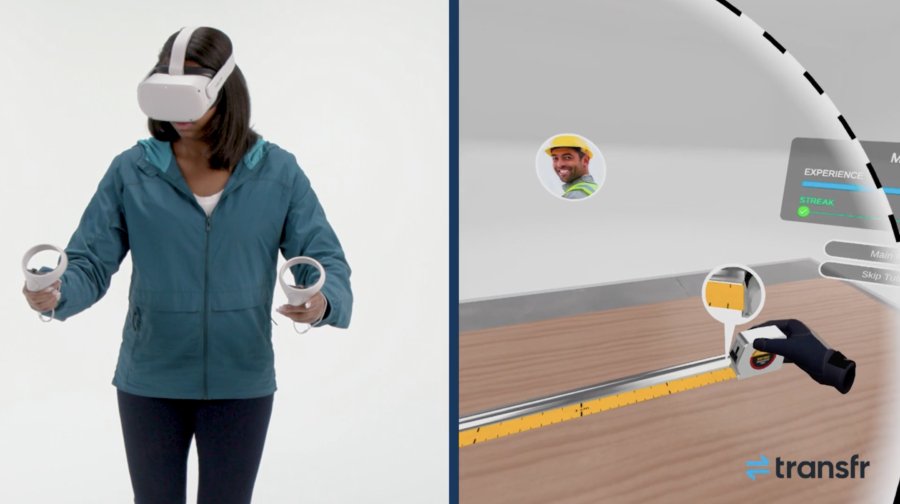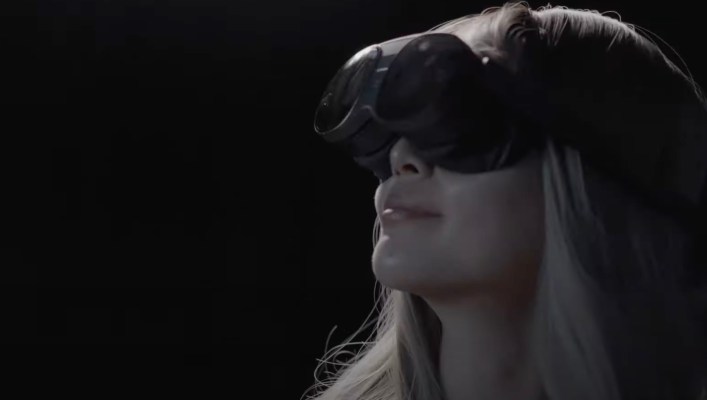Transfr, a startup creating VR tools for training and career development, today announced that it raised $40 million in a Series C round led by ABS Capital with participation from JPMorgan Chase Impact Finance, Advisory, Lumos Capital Group, Akkadian Ventures, Spring Tide Capital, Firework Ventures and Album.
The round brings Transfr’s total raised to $90 million, and CEO and founder Bharani Rajakumar says that it’ll be put toward building out Transfr’s executive team, scaling its platform and investing in the creation of new training simulations that cover a wider range of skills and scenarios. Transfr also plans to expand its foreign language offerings, specifically its training courses in Spanish, and “enhance” its existing offerings with new content.
“This Series C growth capital investment round was led by ABS Capital to further develop Transfr’s virtual reality simulation and training platform and to expand its programs to accommodate its rapidly growing customer base, which has more than doubled year over year from 2019 to 2023,” Rajakumar told TechCrunch in an email interview.
The hype around VR might’ve subsided somewhat. But Transfr has shown to have impressive staying power, with a customer base that now spans government agencies, Fortune 500 companies, community organizations, workforce development groups, K-12 schools and higher-ed institutions.
Rajakumar claims that Transfr is installed in more than 1,000 locations around the U.S. and has facilitated almost 400,000 training simulations.
“In less than three years, the company has grown from serving customers in only one state to working with nonprofit, public sector and enterprise partners in more than 40 states,” he added.
Transfr is Rajakumar’s second company after LearnBop, a math tutoring app that was acquired in 2014 by for-profit education company K12. The success of LearnBop, Rajakumar says, fueled his ambition to create new tech-forward resources for education and upskilling.
Hence, Transfr.
Transfr combines virtual reality demos with hands-on training, aiming to provide learners in industries such as manufacturing with realistic experiences. Guided by a digital coach, users receive instruction that teaches them to perform tasks, gives feedback based on their actions and assesses their performance.
Transfr focuses on what Rajakumar describes as “middle skills” jobs, or jobs that require more training and education than a high school diploma but less than a four-year college degree. Middle skills jobs make up close to half of the U.S. labor market, but it’s estimated that only around 40% of workers are currently trained to the middle-skill level.
But, you might wonder, how can VR courses possibly measure up to the viscerality of on-the-job training? Rajakumar doesn’t necessarily argue that they do, only that they’re created in consultation with “subject matter experts” and dispense with the need for expensive equipment, materials and specialized facilities.

A glimpse at a training course on the Transfr platform. Image Credits: Transfr
“Transfr’s hands-on simulation training provides an immersive learning environment that gives trainees real-world experience in the skills they need for well-paying jobs,” Rajakumar said. “Through strategic partnerships with community organizations, workforce development groups, and educational institutions, Bharani has positioned Transfr as a catalyst for economic development.”
Marketing bluster aside, there’s some evidence to show that VR, indeed, can be a valuable tool when applied to workforce training. A PwC study found that in a corporate class of 3,000 learners, VR was 52% more cost-effective than the classroom.
Deloitte projects that by 2024, 25% of company office meetings will have a virtual reality element to them, and that by 2025, about 70% of employee training will include VR in some way.
Of course, Transfr isn’t free — it makes money by charging a software-as-a-service licensing fee to customers, who also have to acquire the headsets necessary to actually use the platform (Meta’s Oculus Quest headset with Oculus for Business). But Rajakumar makes the case that it’s far more accessible than many of the real-world upskilling programs out there.
“From high school students looking to explore career options to adults trying to gain career stability to the formerly incarcerated looking to re-enter the workforce, Transfr makes it easier and safer to develop the skills necessary to secure well-paying, family-sustaining jobs,” Rajakumar said. “As an economic development platform, Transfr works closely with both public and private entities to build classroom-to-career pathways.”
That’s a lot to promise. But I’d venture to say that, even if it’s not quite to the level of professional classroom instruction, Transfr’s platform probably doesn’t hurt.
